Questo articolo è disponibile anche in:
![]() Français
Français ![]() Deutsch
Deutsch ![]() Español
Español ![]() Italiano
Italiano
The Vasari Corridor it’s a covered way which connects Palazzo Vecchio (Old Palace) to Palazzo Pitti (Pitti Palace), passing through the Galleria degli Uffizi (Gallery of the Uffizi) and crossing the River Arno above the Ponte Vecchio (Old Bridge).
The Corridoio Vasariano, more than one kilometer long and 3.50 mts large, was constructed, in only five months, by Giorgio Vasari (Arezzo 1511-Firenze 1574), the Uffizi’s architect, for initiative of the granduke Cosimo de Medici in 1565 in occasion of the wedding of his son the prince Francesco with Giovanna of Austria.
It was imagined like a “comfortable” private way, in order to link Grand Duke residence over Boboli Garden to the Uffizi (which means “the offices”), where the Grand Duke worked.
Another reason was to give the Medici family the possibility of escaping in case of an uprising, or a discreet passage to move without being seen from the outside. But it was not a secret passage but a symbol of the Mediceo power on the city.
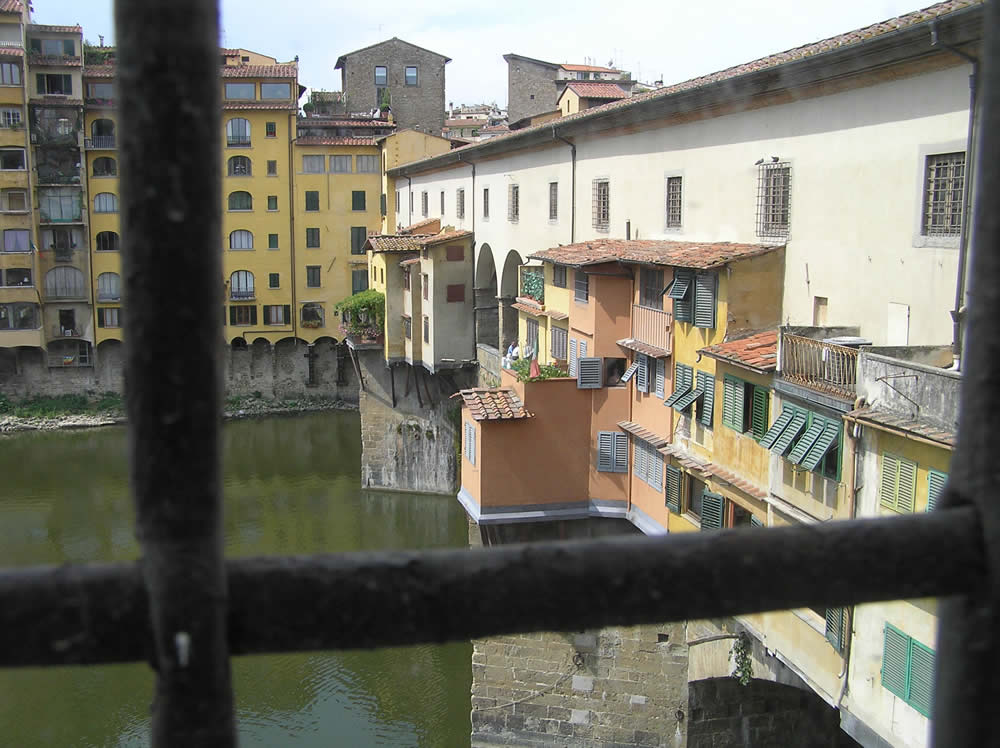
A PRIVATE PASSAGE OVER THE CITY
At the time of construction of the Corridor, in the Old Bridge was held the meat market, but as not to bother the Grand Duke with bad smells while walking through the Corridor, the market was moved and replaced by shops of jewelers who are still on the Bridge.
In the Corridor, today are works that are part of the collection of the Uffizi Gallery, some of which, unfortunately, badly damaged by bombing in World War II, the flood of Florence in 1966 and the bomb of via Georgofili in 1993.
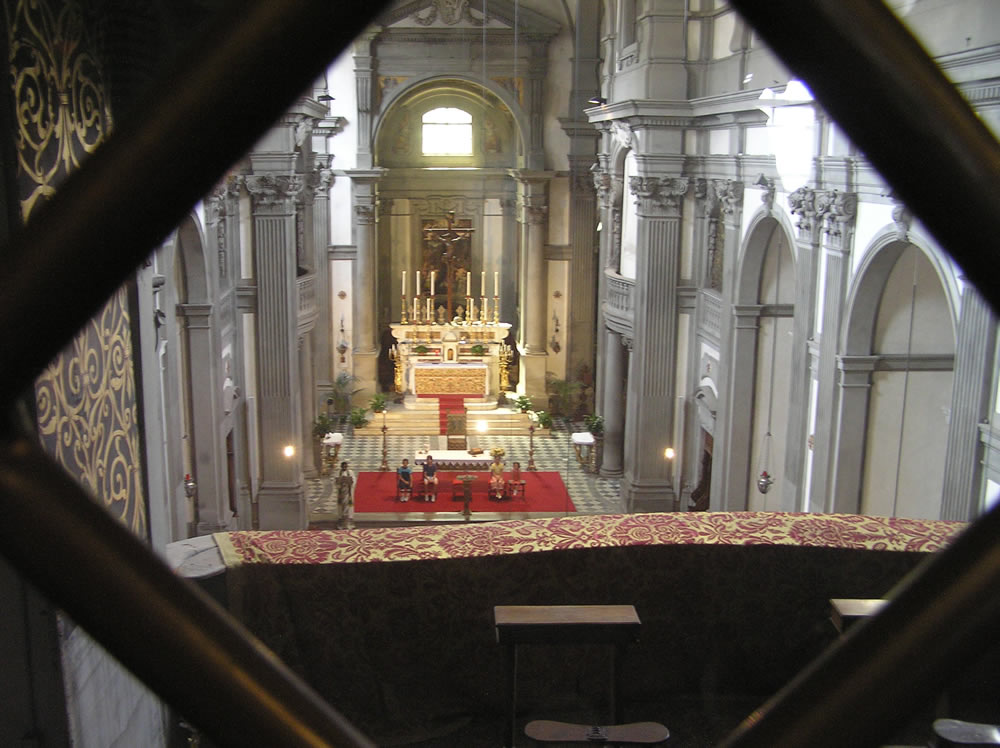
The collection includes Italian paintings of the sixteenth and seventeenth centuries and a collection of portraits of Italian and foreign artists, the world’s largest collection of portraits, are also exhibited many portraits of famous people of every age and nation, they are part of the iconographic section of the museum.
THE CHURCH OF SANTA FELICITA AND THE GARDEN OF BOBOLI
After crossing the Ponte Vecchio, the “Corridor”, so the Vasari called it, revolves around the medieval tower of Mannelli, then through Via dei Bardi in the direction of the Palazzo Pitti. The Vasari Corridor passes by the church of Santa Felicita, here is an opening where the court could attend religious services without mingling with the people. The corridor finally reaches the Boboli Gardens at a point close to the famous Grotta del Buontalenti (Buontalenti Cave).
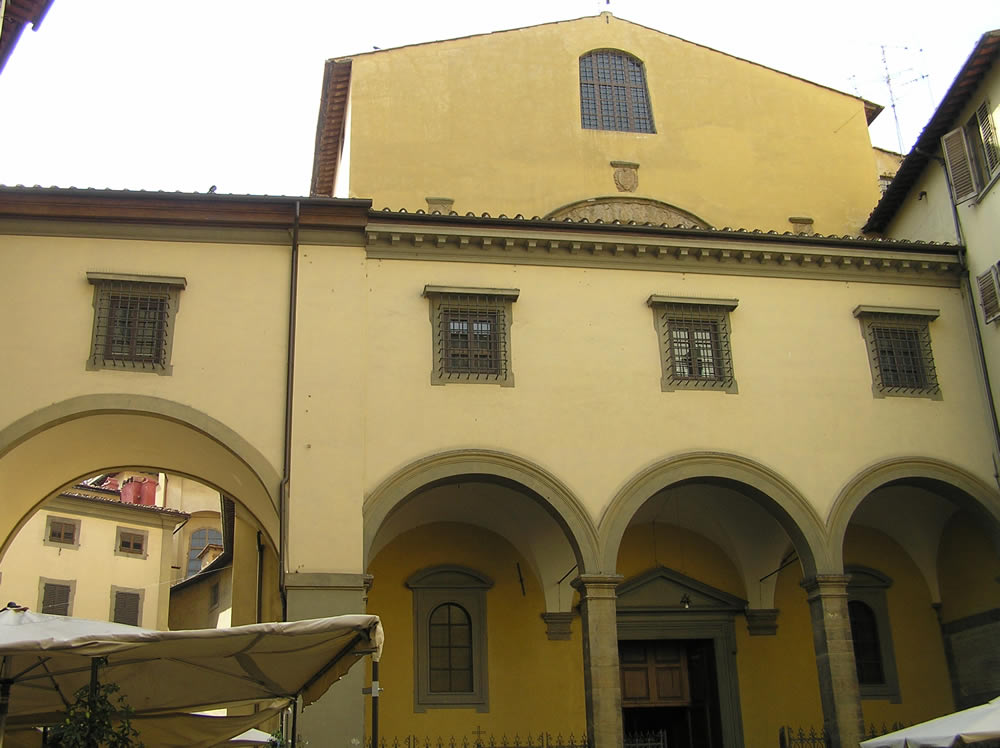
In future projects of the new Uffizi, also called Great Uffizi, the Vasari Corridor will leak air space of the museum. The escape air passing over the town allows the connection between the Uffizi and the Pitti Palace, which will thus become a unique museum that will provide a consistent “understanding” of historical and cultural character of the Medici and Lorraine courts.
Visits: currently the Vasari Corridor is included in a special tour called the “Percorso del Principe” (“Path of the Prince”). It starts from the Palazzo Vecchio, is organized for small groups with a guide. The visits should be arranged for students through the secretariat of the Uffizi Gallery.
Tickets: Full € 28.50 Reduced (European Union citizens between the ages of 18-25 on presentation of a document) € 11.30. For information contact Firenze Musei, Tel: +39 0552654321
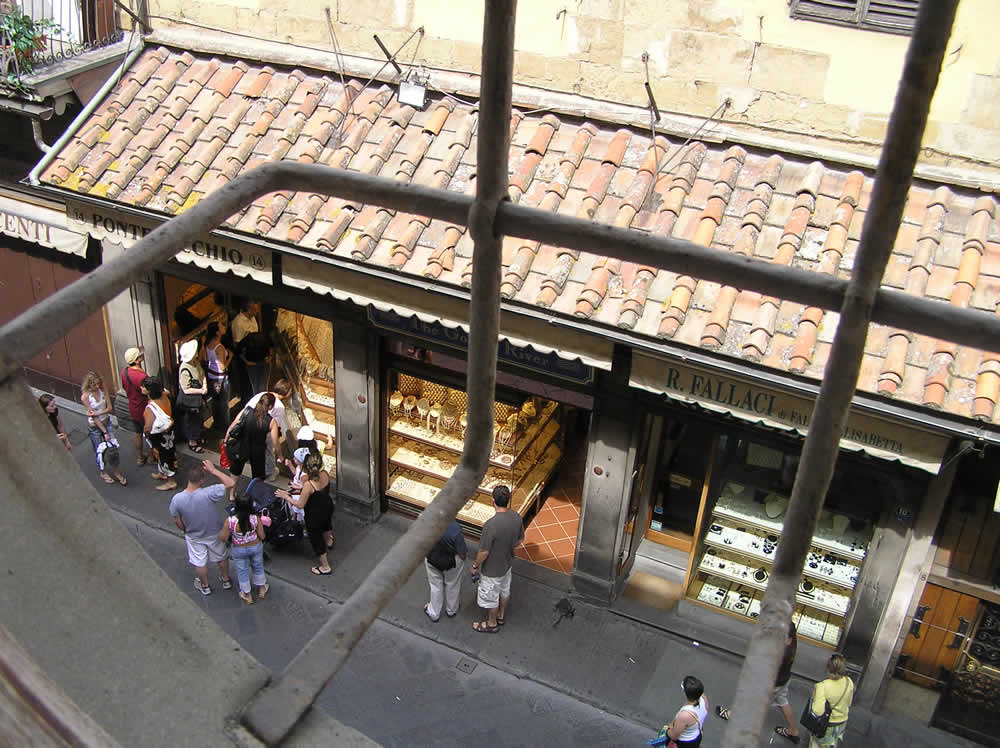
GIORGIO VASARI
Giorgio Vasari was a painter, an architect and a biographer. He was born in Arezzo and did an apprenticeship in Florence, in the circle of Andrea del Sarto. He spent his life as a painter between Florence and Rome where he studied the basic methods of the mannerist painting technique.
In Rome, where he resided between 1542-1546, he had his first work by Cardinal Farnese: the series of paintings in the Vatican Chancellery.
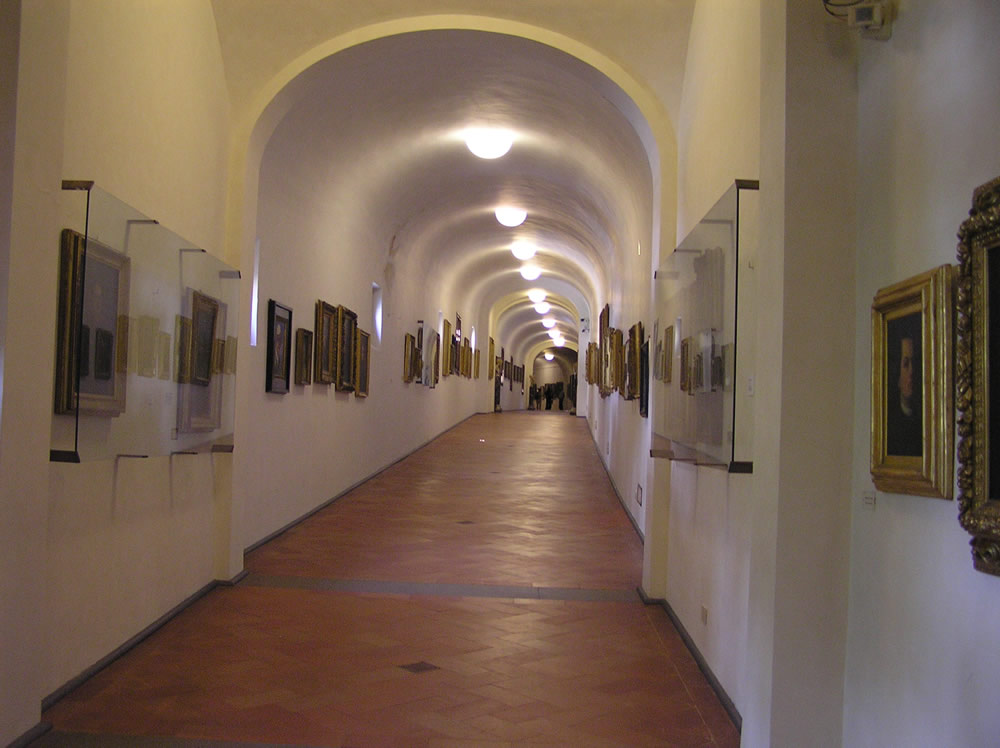
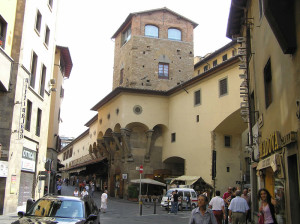
Vasari’s activity as a painter was however overshadowed by his work as a biographer. In fact, he wrote the most important biography work of artists of the time. The first edition of the notes he had collected during his travels in Italy was published in Florence in 1550 with the title of “Lives of the most excellent architects, sculptors and painters”. In 1568, Vasari published a much larger second edition also containing his autobiography. The book is the fundamental source of information on the art of the Renaissance in Italy.
After his period in Rome, Vasari returned to Florence, where, under the protection of Cosimo dé Medici, who had in mind the celebration of the Medici family’s power and the glorious past of Florence, he was entrusted with the task of building the Uffizi (1560) and the Vasari Corridor.
His most important paintings are also found in Florence. These include the galleries and frescoes of Palazzo Vecchio, as well as part of the frescoes in the dome of the cathedral. Vasari was the first important portrait collector, who he also used as research material for his biographies, he founded the Academy of Portraits in 1561. He died in Florence in 1574.
Questo articolo è disponibile anche in:
![]() Français
Français ![]() Deutsch
Deutsch ![]() Español
Español ![]() Italiano
Italiano
